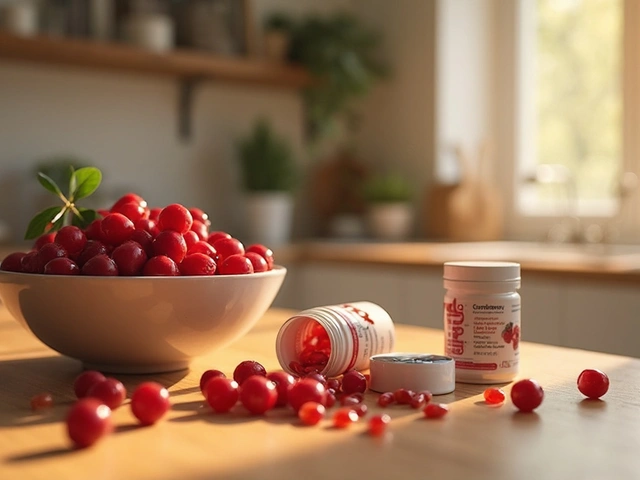Stomach Relief: Simple Steps for Quick Comfort
If your stomach feels like it’s doing somersaults after a meal, you’re not alone. A bloated, burning, or cramping belly can ruin your day, but most of the time you can calm it down without a prescription. Below are the everyday tricks that work for most people, plus the over‑the‑counter (OTC) options you can trust.
Identify the Common Triggers
Before you reach for a pill, think about what you ate or did. Heavy, fried foods, spicy sauces, or a large coffee can overload the digestive system. Alcohol, carbonated drinks, and chewing gum swallow extra air, which leads to gas and pressure. Stress is a sneaky culprit too – anxiety can make the gut contracts irregularly, causing pain.
Keep a quick food journal for a week. Write down meals, snacks, and any symptoms that follow. Patterns pop up fast, and you’ll know which foods to dial back.
Home Remedies That Really Help
Warm water or herbal tea: Sipping warm water or chamomile tea relaxes the stomach muscles and speeds up digestion. Aim for 8‑oz cups every hour you feel uneasy.
Ginger: Fresh ginger slices or a ginger‑pepper tea can reduce nausea and settle cramping. A teaspoon of grated ginger in hot water does the trick.
Apple cider vinegar: Dilute one tablespoon in a glass of water and drink before meals. The acidity can improve stomach pH and aid breakdown of food – just don’t overdo it, or you’ll irritate your lining.
Gentle movement: A short walk (10‑15 minutes) after eating helps food move through the gut and cuts down on gas.
OTC Options You Can Trust
If home care isn’t enough, these OTC meds are widely used for stomach relief:
- Antacids (Tums, Maalox) – neutralize excess stomach acid quickly, great for heartburn and mild acid reflux.
- H2 blockers (Ranitidine, Famotidine) – reduce acid production and last longer than antacids.
- Proton‑pump inhibitors (Omeprazole, Lansoprazole) – for frequent reflux, they keep acid low for up to 24 hours.
- Simethicone (Gas-X) – breaks up gas bubbles, easing bloating and pressure.
- Loperamide (Imodium) – useful for sudden diarrhea, but follow the dosing guide strictly; an overdose can be serious.
Read the label, stick to the recommended dose, and avoid mixing several acid‑reducers unless a doctor says it’s safe.
When to Call a Professional
Most stomach woes fade in a day or two, but seek medical help if you notice any of these signs:
- Severe, unrelenting pain that doesn’t improve with OTC meds.
- Vomiting blood or material that looks like coffee grounds.
- Black, tarry stools (possible bleeding).
- Weight loss, night sweats, or persistent nausea for weeks.
- Symptoms after a known allergy or medication reaction.
These could signal ulcers, gallstones, pancreatitis, or other conditions that need prescription treatment.
Bottom line: Most stomach discomfort can be eased with simple diet tweaks, warm drinks, and a few reliable OTC choices. Track what triggers you, try one remedy at a time, and don’t ignore warning signs. Your gut will thank you, and you’ll get back to feeling normal fast.

Antacids: A Simple Ally in Managing Functional Dyspepsia
- By : Archer Hamilton
- Date : Feb 24 2025
Antacids offer a straightforward approach to managing the discomfort of functional dyspepsia by neutralizing stomach acid. Unlike more complex treatments, antacids provide quick relief for symptoms like bloating and heartburn. They're widely available and easy to use, but knowing how and when to use them effectively is key. We'll dive into practical tips, potential limitations, and considerations to keep in mind. Understanding their role can empower individuals to manage their digestive health with greater confidence.





